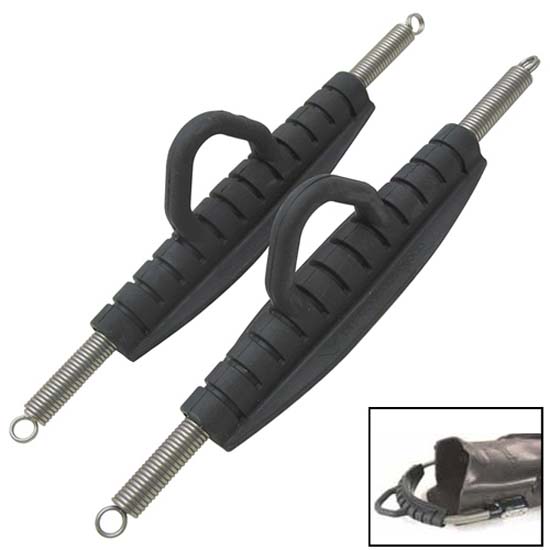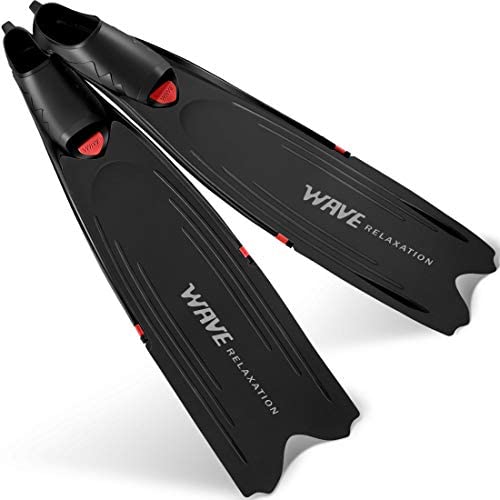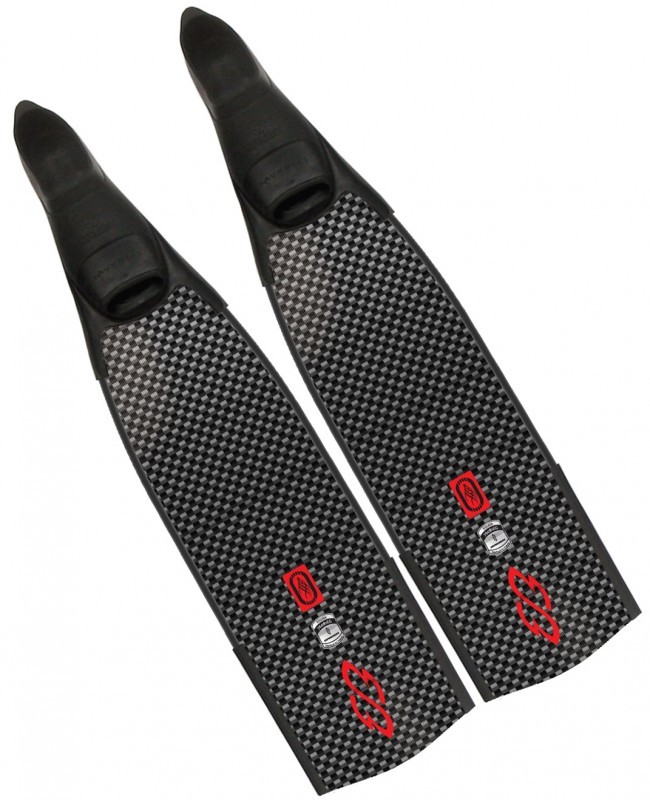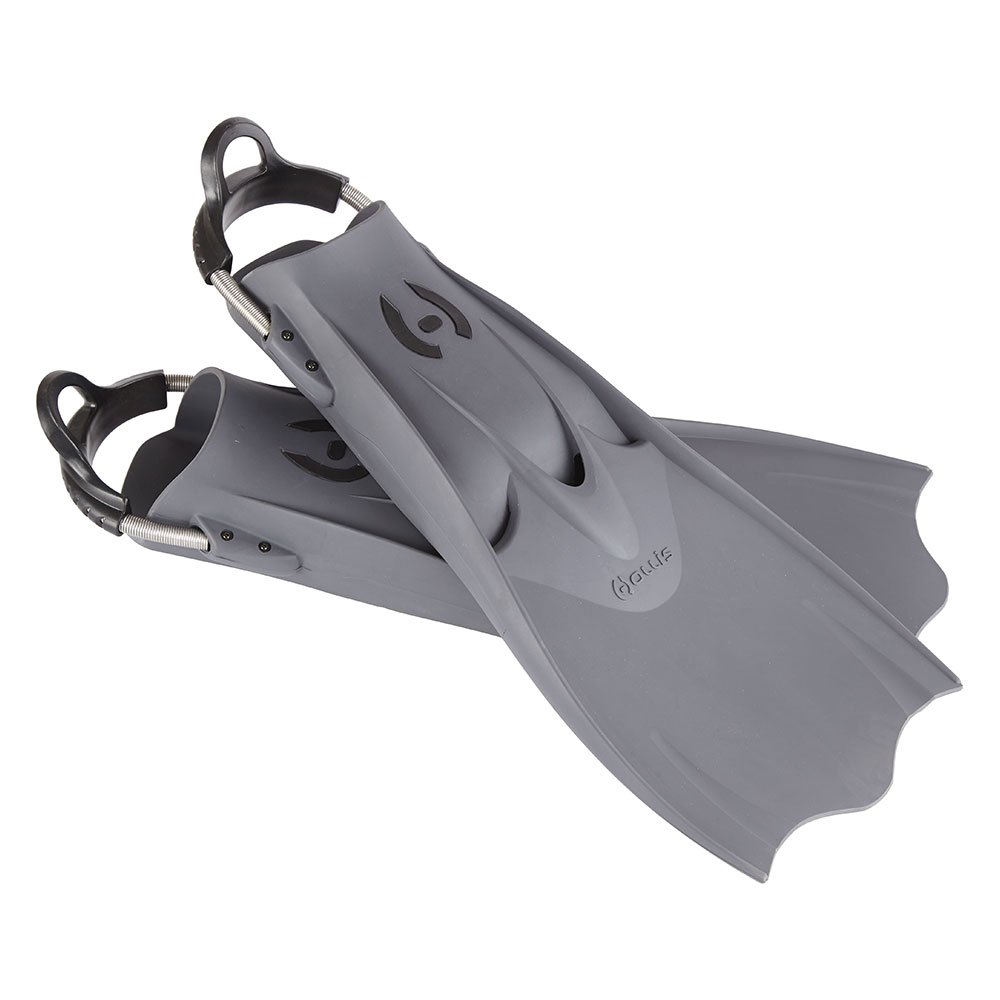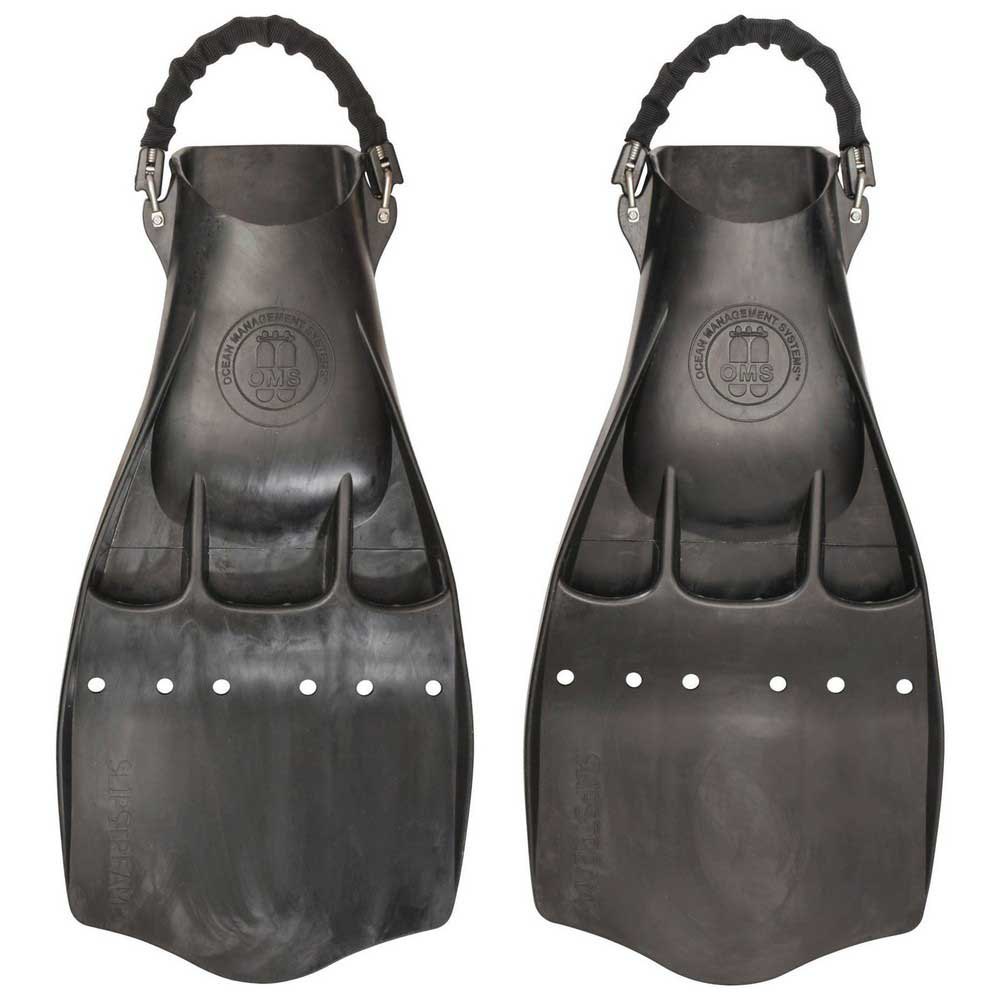HOW FINS WORK
If you’ve ever swished your hand through a tub of water (to swirl in some bath salts, for instance), you’ve undoubtedly noticed that water provides resistance to anything moving through it – you can feel the water “pushing back” against your hand.
It’s this push-back that provides much of the propulsion created by a moving fin. Just as the sole of your foot encounters resistance (and thus creates propulsion) when you swim, fins encounter resistance and create propulsion as well. But fins work better than bare feet because their surface area is larger (thus encountering more water for that critical resistance), and – on most modern fins – the undulating motion of the fin provides resistance in both motions of the kick cycle (i.e., the up-motion power stroke as well as the down-motion return stroke, when the fin acts like a scoop being moved through the water).
Physics dictates that the direction of your travel will be the exact opposite of the direction in which you are pushing the water. Because of this, fin manufacturers have paid lots of attention in recent years to channeling – how the fin focuses the direction in which the water is moved. Many manufacturers have also focused on engineering fins that have extremely flexible web sections, split fin construction, and other advantages. All of these are designed to reduce the amount of energy required to move through the less-effective return stroke of a kick cycle, while preserving a great deal of effectiveness on the power stroke.
This results in less muscle fatigue and, (if you are not a regular diver) a decreased chance of post-dive muscle soreness. Divers who are conditioned through regular swimming with fins often claim, though, that less flexible fins, or fins with solid blades, provide greater power in the water. Just which design is the most effective is a source of constant debate among divers and a common topic of post-dive conversation.
One thing is certain, though; swimming with fins is a dramatic and significant improvement over swimming without them.
Explaining the differences in fins
In this article we will touch on the different types of fins, some of the different features and how to select the right fins to fit you.
Types of fins
The first thing to consider is the style of fins that suits you. Fins can almost always be classified into two different styles: full-foot fins or open-heel fins. As you can tell from their names, the two different styles of fins are quite self-explanatory.
Full-foot fins have soft, flexible foot pockets which completely warp around your feet including your heels. Full-foot fins are worn without dive booties and are usually worn barefoot although some divers may prefer to wear neoprene socks with these fins for a little bit of extra protection. Pros of full-foot fins include: cheaper to buy, less bulky which means they are travel friendly and they allow the energy from a divers feet to transfer directly onto the fins. Cons include: no flexibility in size, either they fit or they don’t, not being able to wear booties with them, and they are harder to put on and take off.
2 types of Full foot fins
- Scuba Diving, easy when you go for boat dive, power of the fin kicks is not much compared to other Fins, difficulty in heavy Currents.
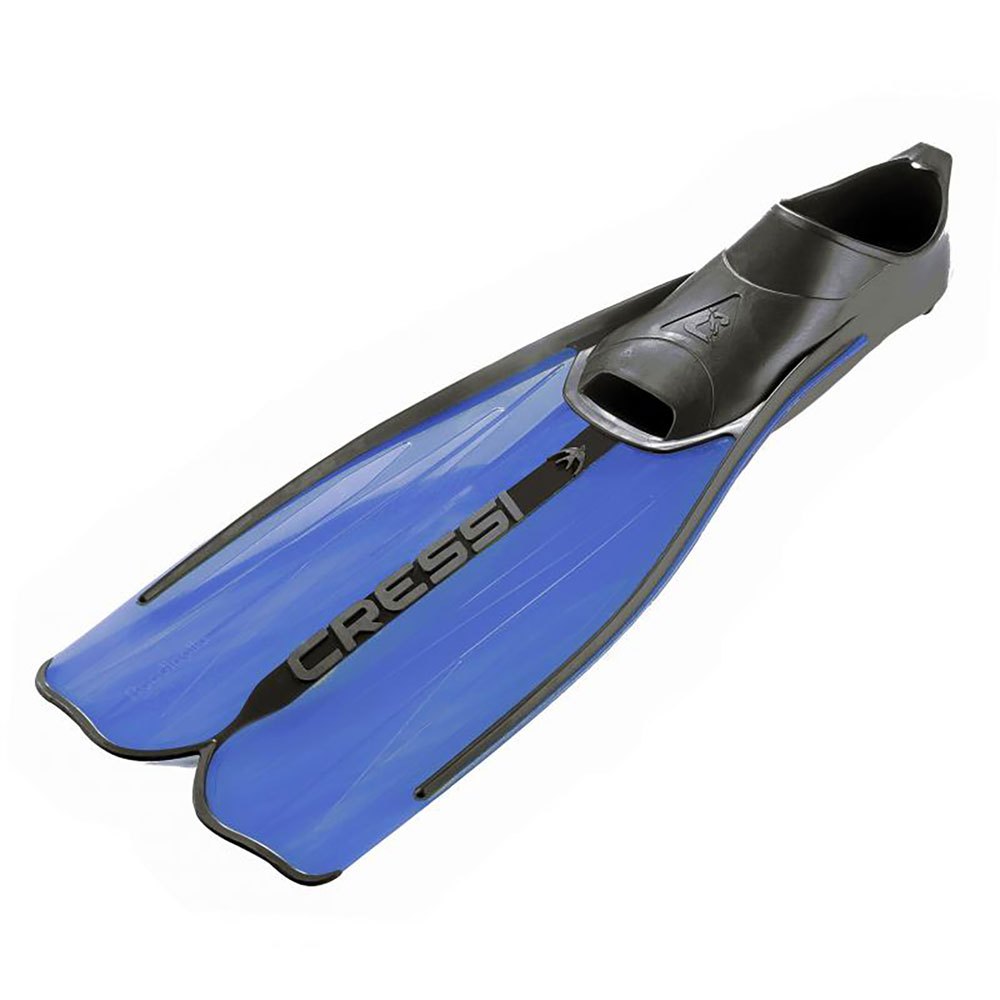
2. Free Diving Fins, long blade fins: Useful for free diving, as less effort is needed to move a long distance in water, good for under water photography as the movement is smooth and no jerks of the fins are transmitted to camera.
Open-heel fins have foot pockets that cover most of your feet but leave the heels exposed. In place of a foot pocket there are straps that secure your foot in place to the fins. Open-heel fins have rigid foot pockets and are designed to be worn with dive booties. These fins are also bigger than full-foot fins in order to accommodate the extra bulk of the booties. Pros of open-heel fins include: flexibility, ease of wearing and taking off, the added benefit of wearing dive booties which provide additional thermal protection and protection against other hazards. Cons of open-heel fins include: they usually cost more plus the cost of buying dive booties to wear with them, they are large and bulky.
Styles of the blades
Scuba diving fins work by propelling you through the water using blades. There are many different styles of blades available for scuba diving fins and they all have their pros and cons. There five main blade styles that we will talk about today: paddle, vented, channel, split and hinged.

Paddle fins are standard fins with a flat blade and are the simplest in design. They work like an oar and propel you forward with every kick.
Vented fins are a step up from paddle fins with vents at the base of the foot pocket which allow water to pass through on the recovery stroke of the kick cycle and prevent water from passing during the power stroke. The vents make vented fins more efficient than your standard paddle fins.
There are 2 different kinds of Vented Fins.
- Neutrally buoyant Vented Fins- Used along with normal wetsuit, not heavy, specially used for sidemount, where u need the power to move with slight effort, back movements, helicopter turns
- Negatively buoyant Vented Fins: For Cold water, with Dry suit configuration, to compensate for the pull of the dry suit u had heavy boot vented fins. Excellent for tec dives, they serve the same purpose as above fins
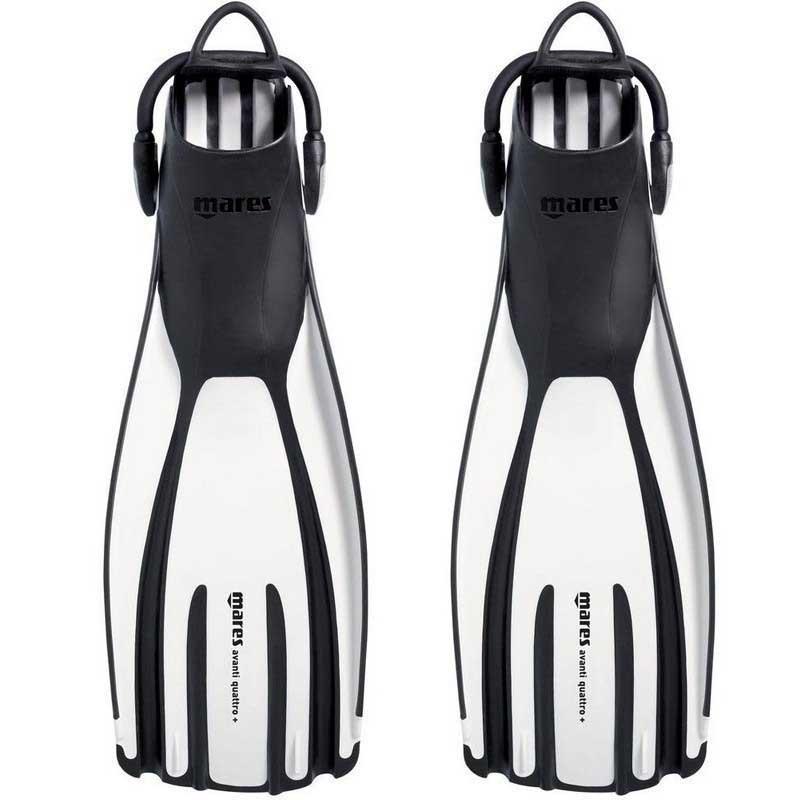
Channel fins utilize different materials throughout the blade to allow it to flex when used in the water. When the blade flexes it forms a “U” shape channel that captures and contains the water, creating a jet of water that increases propulsion.
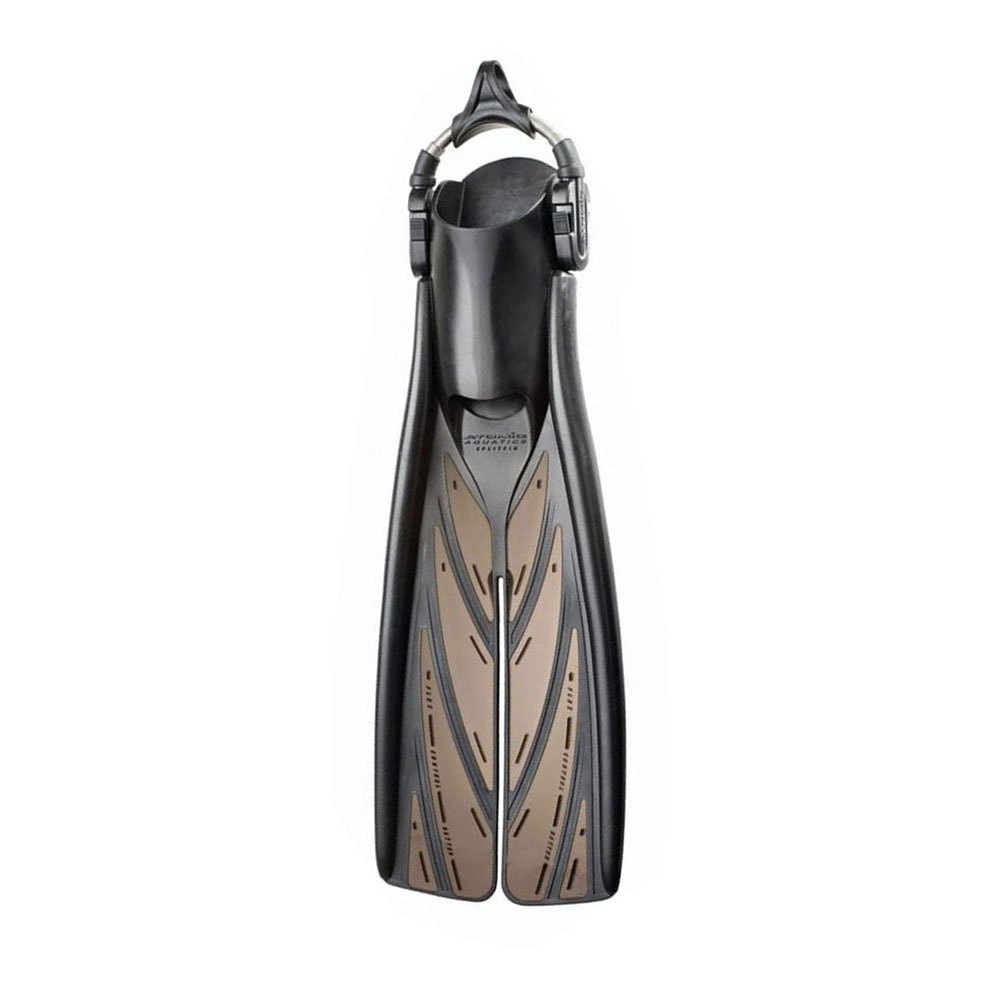
Split fins have a split down the middle of the blade and work similar to the wings of a plane. Instead of moving you forward by pushing water backwards, split fins propel you through the water using “lift” created by water moving through the splits. This makes it extremely easy to kick with split fins.
However, divers might find that these fins don’t provide much manoeuvrability when changing directions or when trying to stop abruptly.
Hinged fins have a pivoting blade that will angle itself when you kick to optimise the efficiency of your kick cycle. The hinged design is achieved using bungee bands or flexing bars along narrow sections of the blade.
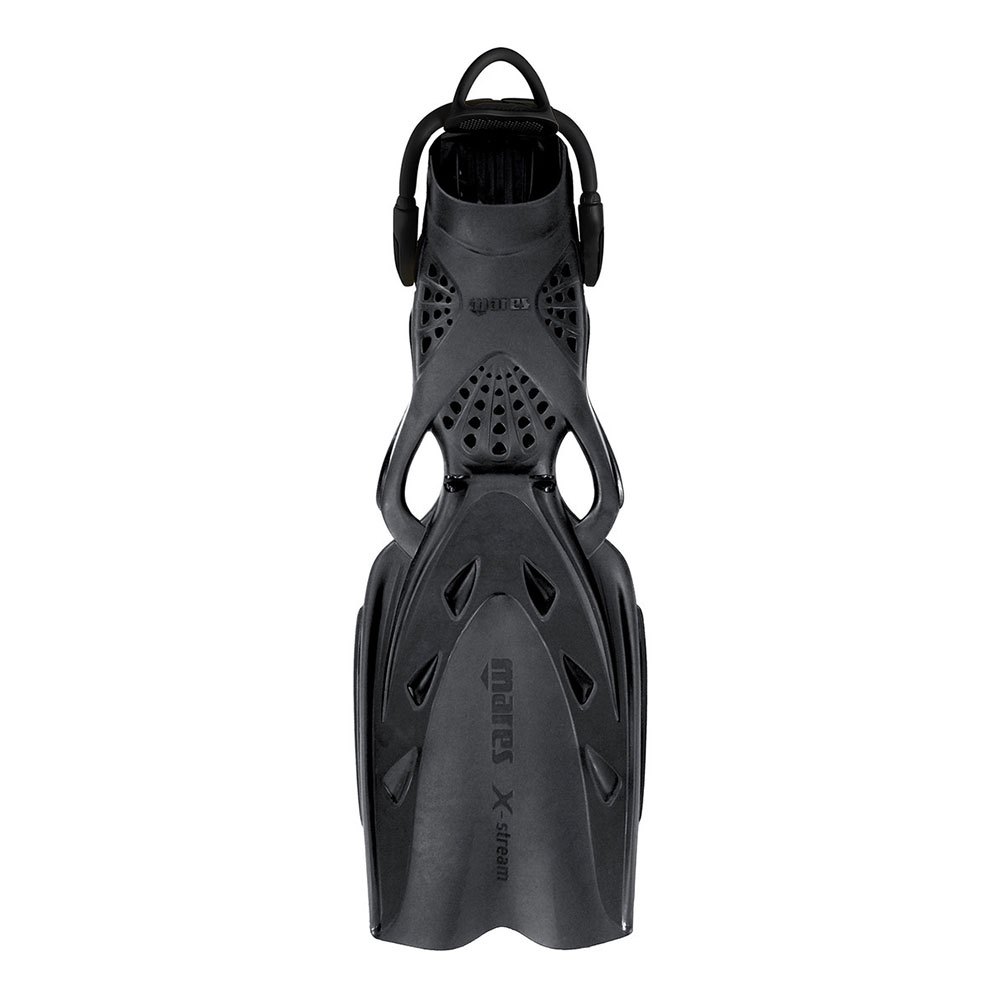
Fitting your fins
After all that, how do you know what fins suit you? If you are buying your first pair of fins you should go for a paddle fin or vented fin. These fins have a standard design and are very affordable. Using a standard fin will also allow you to determine your kick-style. If you have strong legs and a powerful kick then paddle and channel fins will offer you more control underwater. If you don’t have a powerful kick then opting for the split fins will allow you to move better underwater whilst expending less energy.
It is important that you make sure your fins fit just right because an ill-fitting fin may cause blisters or cramps during use. The best way to make sure your fins fit is to try them on. If you are buying open-heel fins, bring along your dive booties to try on with your fins. There is no standardisation in sizes between the different manufacturers, so you cannot assume that a size of one brand of fins is the same as another brand’s. Some manufacturers may even have different sizes across different models
STRAPS OF FINS
FINS STRAPS:
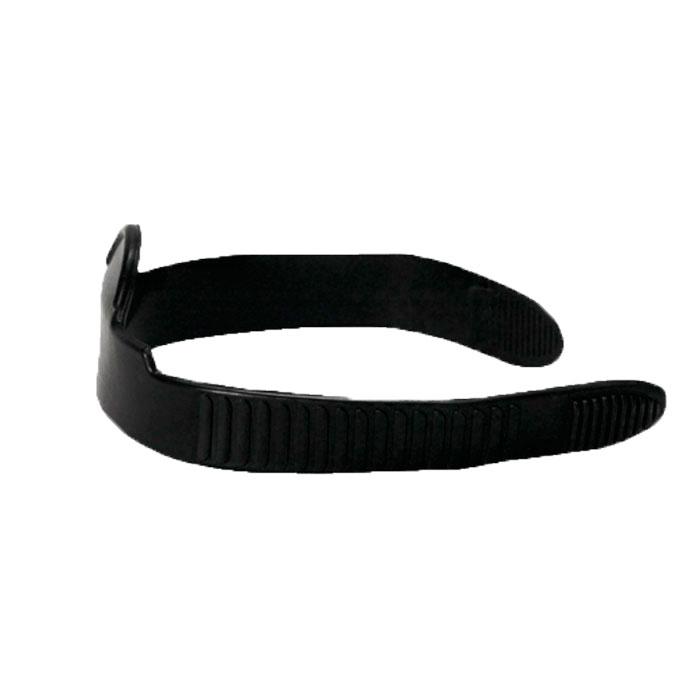
- Normal type: These are good for beginners, bit difficult to wearing of the fine when wearing gloves, need to pull to tighten the straps. Buckle release when removing the fins.
2. Spring straps for open-heel fins, once a heavy-duty innovation mainly used by wreck or cave divers, are now gaining popularity among recreational divers because they are virtually unbreakable, they are easy to put on and take off with gloves or mitts on, and they have no tag end that can trap a guideline. Spring straps are heavier than conventional latex or silicone straps, though, as well as being more costly, and they take up a little more packing space.
